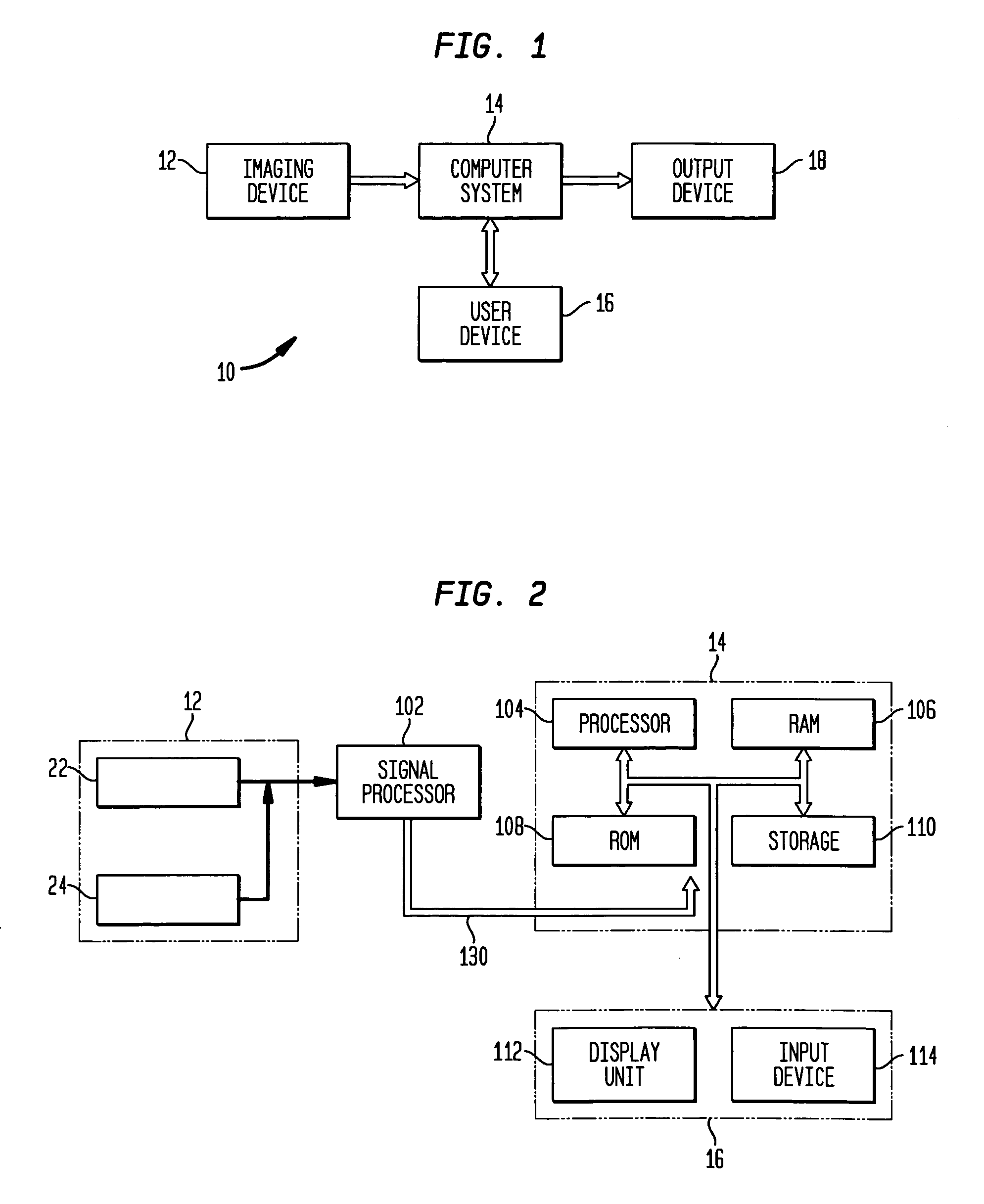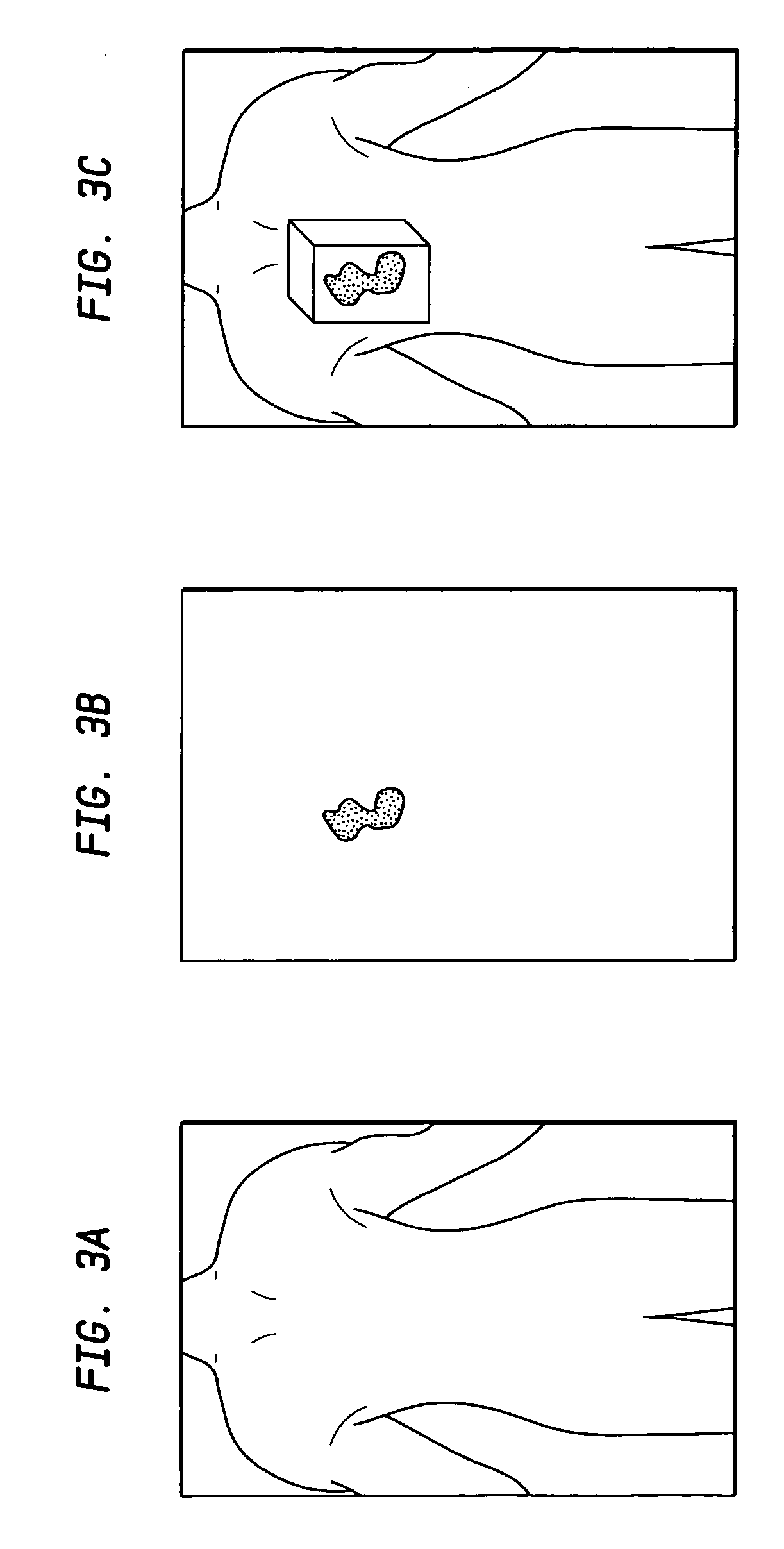System and method of measuring disease severity of a patient before, during and after treatment
a technology of disease severity and system, applied in the field of diagnosis, prognosis and severity of disease, can solve the problems of reducing diagnostic accuracy, reducing diagnostic accuracy, and reducing the ability to extract objective and quantitatively accurate information from biomedical images, and not keeping pace with the ability to acquire, produce and register images
- Summary
- Abstract
- Description
- Claims
- Application Information
AI Technical Summary
Benefits of technology
Problems solved by technology
Method used
Image
Examples
Embodiment Construction
[0024] In the following detailed description of the preferred embodiment, reference is made to the accompanying drawings which form a part hereof and in which is shown by way of illustrating a specific embodiment in which the invention may be practiced. This embodiment is described in sufficient detail to enable those skilled in the art to practice the invention, and it is to be understood that other embodiments may be utilized and that structural or logical changes may be made without departing from the scope of the present invention. The following detailed description is, therefore, not to be taken in a limiting sense, and the scope of the present invention is defined by the appended claims.
[0025]FIG. 1 schematically shows a system for measuring extent and severity of disease in a patient according to an exemplary embodiment of the present invention. Referring to FIG. 1, a system 10 comprises an imaging device 12 for acquiring anatomical and functional image data sets, a computer...
PUM
 Login to View More
Login to View More Abstract
Description
Claims
Application Information
 Login to View More
Login to View More - R&D
- Intellectual Property
- Life Sciences
- Materials
- Tech Scout
- Unparalleled Data Quality
- Higher Quality Content
- 60% Fewer Hallucinations
Browse by: Latest US Patents, China's latest patents, Technical Efficacy Thesaurus, Application Domain, Technology Topic, Popular Technical Reports.
© 2025 PatSnap. All rights reserved.Legal|Privacy policy|Modern Slavery Act Transparency Statement|Sitemap|About US| Contact US: help@patsnap.com



